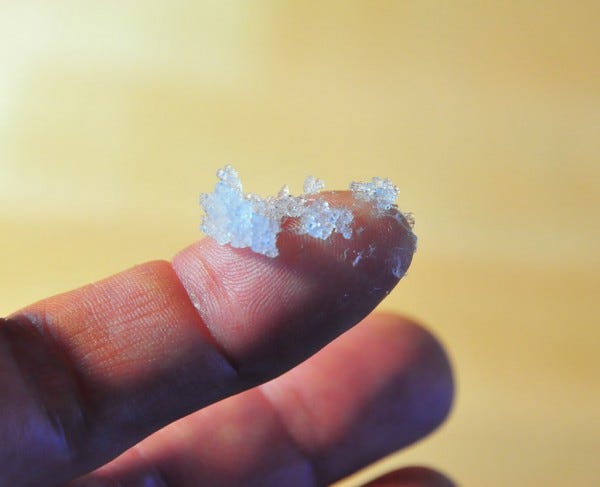Is it safe to touch Silica Gel? What will happen if you eat Silica Gel?

Silica gel has been in existence since the 1600s. Back then, it was mostly just a scientific curiosity. In World War I, it was used in gas mask canisters for the adsorption of vapors and gases. The process of producing silica gel synthetically was patented in 1918 by chemistry professor Walter A. Patrick at Johns Hopkins University.
Silica gel was indispensable in the war efforts during World War II as well. It was used during that time to keep penicillin dry, protect military equipment, to produce high octane gasoline, and for manufacturing of butadiene from ethanol.
Today, silica gel is used in almost every industry and application you can think of. Since it is used so widely, you must have wondered at some point, what will happen if you were to accidentally ingest it?
Well, accidentally or not, we’ll answer that question in this article. Keep reading to find out what will happen if you ingest silica gel and whether it can be harmful to you.
Silica Gel — What you should know!

Silica gel is a granular form of silicon dioxide (SiO2), which forms when silicon is oxidized. It is synthetic but SiO2 is also commonly found in nature in the sand.
Silica gel is a desiccant, meaning that it can absorb a lot of water (about a third of its weight). And it can do so without undergoing a chemical reaction. The silica gel granules stay dry to the touch even when they’re saturated. Saturated silica gel can be reused after heating at 250°F for two hours.
The aforementioned properties make silica gel extremely useful in applications where you need to control moisture and humidity.
Is Silica Gel safe to touch?

Silica gel is a form of silicon dioxide or SiO2. Silicon dioxide occurs in nature as sand. So, just like walking on the beach doesn’t affect your legs or skin, touching silica gel is completely harmless.
White or non-indicating silica gel is completely safe to touch but colored or indicating silica gel poses some hazards. Touching small amounts of colored silica gel for a short period of time should not pose any major health risks. But you should avoid touching it with your skin as far as possible.
Indicating silica gel is colored with certain chemical compounds so that they change color when saturated or dry. Although such chemicals help you easily determine whether the silica gel is saturated or not, they can be quite dangerous.
Cobalt Chloride is one such chemical and it is believed to be carcinogenic and highly toxic. Methyl Violet is another such chemical. It causes eye & skin irritation, as well as irritation in the digestive tract if swallowed.
Could ingesting Silica Gel kill you?

The simple answer is, no. If you were to ingest some silica gel granules then it won’t kill you. There might be some complications, but more on this in the next section.
Silica gel is non-toxic and chemically non-reactive. Essentially, it is man-made sand. If you eat some granules or even a packet, you won’t see any ill effects. It is reported that it is almost tasteless.
But, this should not be construed as if it is entirely harmless to consume silica gel.
Possible Harmful effects of consuming Silica Gel

Silica gel might not be completely dangerous, but it’s not entirely safe either. You might have seen warnings on silica gel packets that they’re harmful and should not be ingested. Let’s discuss a few reasons behind such warnings!
Dehydration

Silica gel’s primary characteristic is that it is a desiccant. Its job is to absorb moisture. If you were to eat it, it’ll keep absorbing moisture as you digest it. Although you’ll have to eat a lot of it to suffer from dehydration, that’s still a possibility. And if you were to ingest enough of it, it can dehydrate you in no time.
Toxic additives and vapors
In its transit to you, silica gel could be exposed to any kind of toxins or foreign vapors. Ingesting such silica gel will inevitably be harmful to you. Silica gel is a good absorbent and so, there’s a good probability that it has absorbed some toxic vapors or additives. Sometimes, fungicides and pesticides are added to the silica gel.
You must watch out for cobalt chloride, which is commonly used to make indicating silica gel. It is highly toxic. It servers the purpose of indicating when the silica gel is dry or saturated. Cobalt Chloride makes the silica gel granules blue when they’re dry and turn pink when they’re saturated.
Silicosis

Silicosis is a lung disease and is also called Grinder’s disease. You’re likely to catch it by inhaling silica dust. Its symptoms include scarring and nodular lesions in the upper lobes of the lungs, shortness of breath, fever, and cyanosis.
Final Words

Silica Gel has innumerable uses and applications. It has significantly improved the way we store, transport, and deliver goods. If you’ve ever wondered why there’s a do-not-consume warning on silica gel packets, then we hope this article answered your questions.
If you’ve got any more questions, you can let us know in the comments below!
